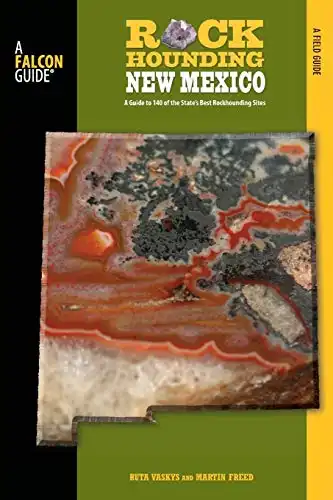New Mexico is a very popular destination for rockhounding. With its amazing desert landscape, snow capped mountain, national monument, and hot springs, it will definitely take the breath of anyone who visits.
This colorful place known as “The Land of Enchantment” will give you the opportunity to explore a variety of minerals, rocks, and gems while at the same time you will enjoy its scenic reputation.
With a history of being one of the oldest mining states around, the possibilities are endless.
But not only that, they even have parks for you to explore with your friends and family, and let me tell you, there is a strong possibility you will find some cool rocks, crystals or fossils in these parks.
I’m talking about hundreds of miles to explore; if you are ready for the adventure, here is a glimpse of the types of rocks, minerals and gemstones you could find.
Related: Ultimate Guide to Rockhounding in New Mexico
A List Of Rocks, Minerals and Gemstones Found In New Mexico
Red Beryl
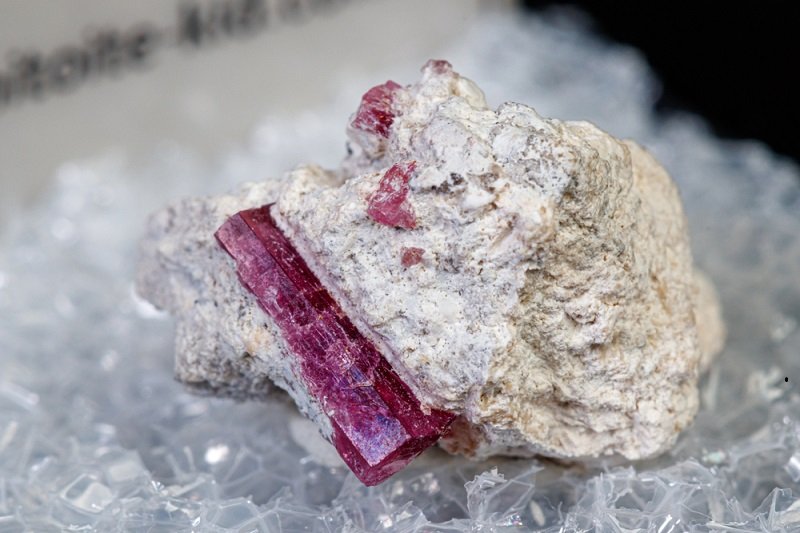
Within the world of gemstones, beryl is one of the most desirable stones in the world due to its rarity in nature and because it appears in diverse and beautiful striking colors such as blue, green, pink, and yellow.
Beryl is a well-known mineral and gemstone belonging to the group of silicates (cyclosilicates) that has the chemical formula Be3Al2Si6O18, 14% of the volume is BeO, 19% Al2O3, and 67% corresponds to SiO2.
The main component of beryl is beryllium, which is a very scarce element on the earth’s surface.
To appear, a significant concentration, very specific, with extreme geological conditions must exist.
If you will like the chance of finding this stone, this is the place to be:
- Beryllium Virgin claim, Paramount Canyon, Sierra Co., New Mexico
Azurite
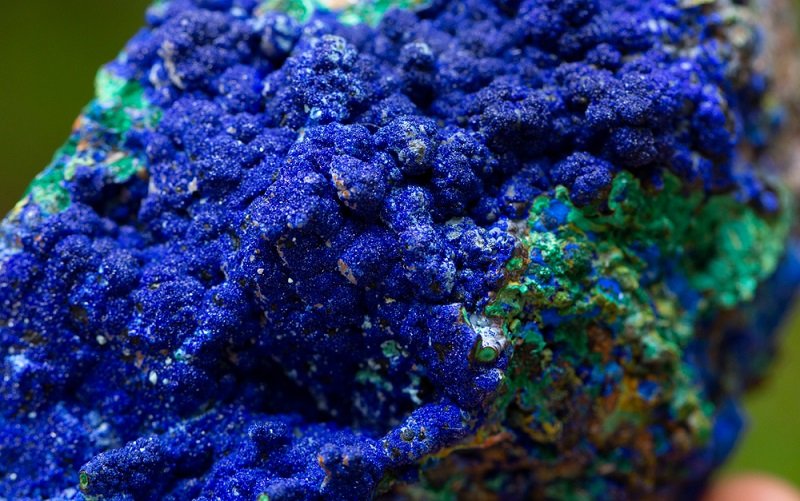
Azurite is one of the rarest precious and semi-precious stones that appear in nature. In fact, it belongs to the select group of copper gems along with malachite, chrysocolla, Paraiba tourmaline, and turquoise.
Due to its unique physical properties, it was used by various cultures as an ornament for pregnant women in search of a good pregnancy and delivery.
But currently, it’s not used in the high-end jewelry industry as a gemstone because it is highly reactive and has no resistance to weathering or wear; therefore, its use in jewelry is limited.
However, many still use the stone to create rings, bracelets, chains, pendants, earrings, and many other accessories, which are also an excellent gift if taken care of.
You can find azurite stone in these locations:
- Jeter Mine (Charlie No. 2 prospect), Ladron District, Socorro Co., New Mexico.
- Good Hope mine, San Miguel Co., New Mexico.
- Logan area, Quay Co., New Mexico.
Fossils
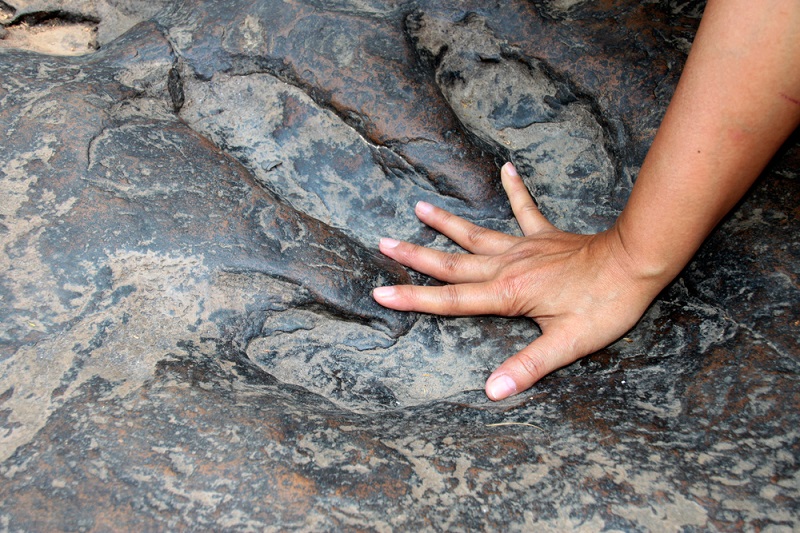
As you probably know, fossils are the remaining parts of plants, fungi, bacteria, animals, and living beings replaced by rock material and preserved in the rock for over 10,000 years.
Fossils provide a window into the past; that’s why they’re so valuable.
And what I like about being in New Mexico is that they have a vast number of fossils for you to find.
To give you an example, they have a park that’s called the “Clayton Lake State Park and Dinosaur Trackways,” where you could explore fossils.
Wulfenite
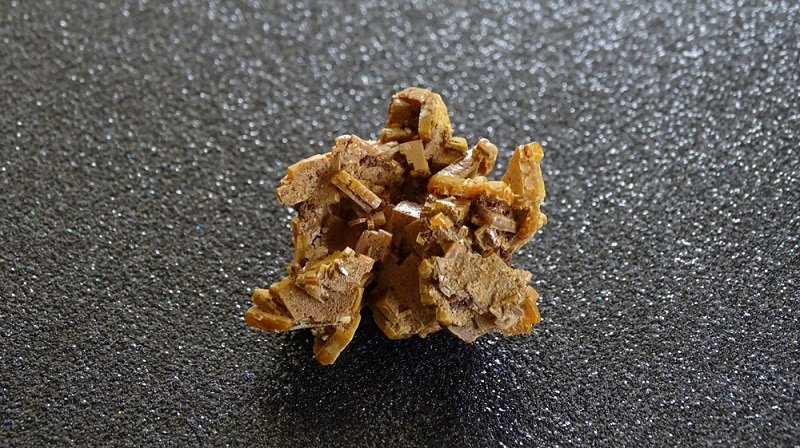
Wulfenite is a mineral that belongs to the group of molybdates formed in lead deposits and oxidation zones.
It is named in honor of Franz Xavier Von Wulfen (1728-1805), an Austrian-born mineralogist known for his monographic work on minerals, among which he described the discovery of wulfenite.
The mineral wulfenite is one of the most desirable by collectors worldwide due to its rarity.
This gemstone creates unique crystals and shades in colors that few minerals on our planet possess.
The wulfenite gemstone is primarily found in the form of bright red, honey-yellow, bright orange, or yellowish-orange crystals, depending on the intensity of ultraviolet (UV) light that is exposed to.
You can find this mineral in these locations in New Mexico.
- Lemitar Mountains, Socorro Co., New Mexico.
- Cat Mountain District, Socorro Co., New Mexico.
- Hansonburg District, Socorro Co., New Mexico.
Vanadinite
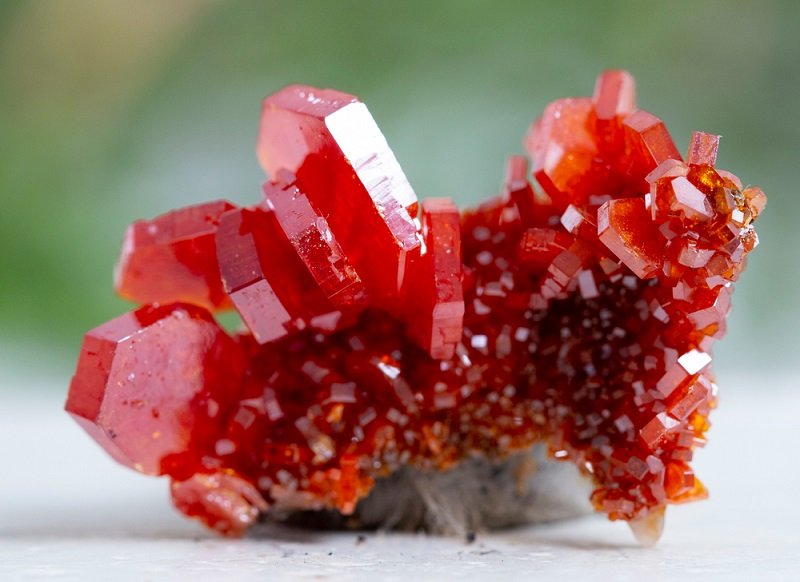
Vanadinite is a rare mineral that belongs to the group of vanadate’s and phosphates, along with the famous mineral apatite.
Vanadinite has a bright and intense red color, combined with orange tones and striking crystals with an isomorphic hexagonal shape, making it one of the most sought-after gemstones by collectors.
Also, it is a vanadium mineral, which means that it has multiple industrial applications, including lead production.
Most of the vanadium is used in the manufacture of vanadium pentoxide and ferrovanadium.
The latter is an alloy of iron that offers resistance to corrosion and strong shocks, which is why it is usually incorporated into steel to prevent oxidation and increase its resistance.
In New Mexico, you can find this mineral in the following locations:
- Taylor Creek Tin District (Black Range Tin District), Sierra Co., New Mexico.
- Red River District, Taos Co., New Mexico.
- Harding Mine (Harding pegmatite), Picuris District, Taos Co., New Mexico.
- Taylor Creek Tin District (Black Range Tin District), Sierra Co., New Mexico.
Pecos Diamonds
The Pecos diamonds are colorful, terminated quartz crystals that appear in Permian Seven Rivers Formation along the Pecos River.
A diamond is the hardest element known to nature. They were used since ancient times as a gem in the world of jewelry.
Over time it has acquired applications in the industrial sector for drilling and polishing rocks and tools and in medicine as a surgical material.
You can find Pecos diamonds in the southeastern region of New Mexico, appearing in dispersed rock formations that span 100 miles long and 25 miles wide.
Some specific locations where you could visit are:
- Crescent/North Mine, Carlsbad Potash District, Eddy Co., New Mexico
- Seven Rivers, Eddy Co., New Mexico
- Mosaic mine, Carlsbad Potash District, Eddy Co., New Mexico.
Gold
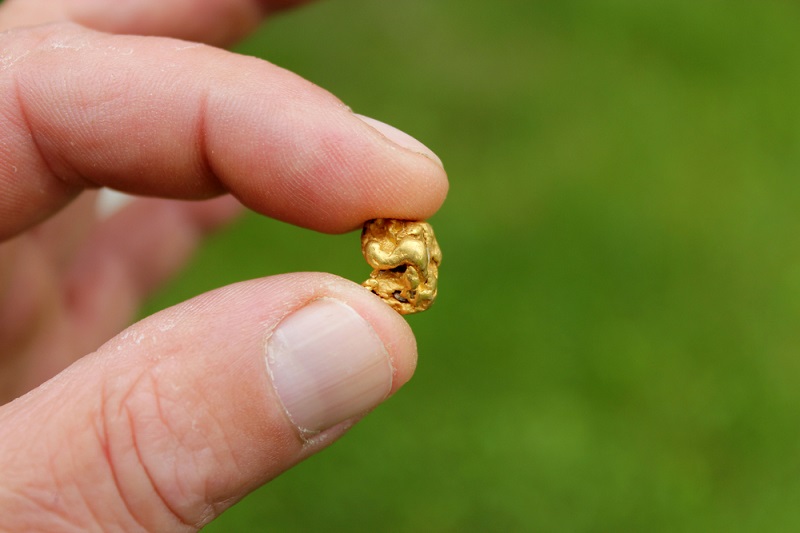
Gold is one of the most popular and well-known minerals, known for its value and special properties since ancient times.
Most of the natural Gold specimens that have been found since the earliest times have been cast for production.
You will often find that gold in its natural structures will have traces of silver and may also contain traces of iron and copper.
A small piece of gold usually has 70 to 95 percent of gold, but the rest of its mass is silver. The color of pure gold is a really bright yellow, but the higher the silver component, the whiter the gold piece will be.
To extract this precious metal, the ore is crushed, then the gold is separated from the ore by various methods.
You can find this mineral in these locations:
- Trojan Mine, Percha Creek, Hillsboro, Hillsboro District, Sierra Co., New Mexico.
- Gallisteo, Cerrillos District, Santa Fe Co., New Mexico.
- Section 2 Occurrence, White Oaks District, Lincoln Co., New Mexico.
Smithsonite
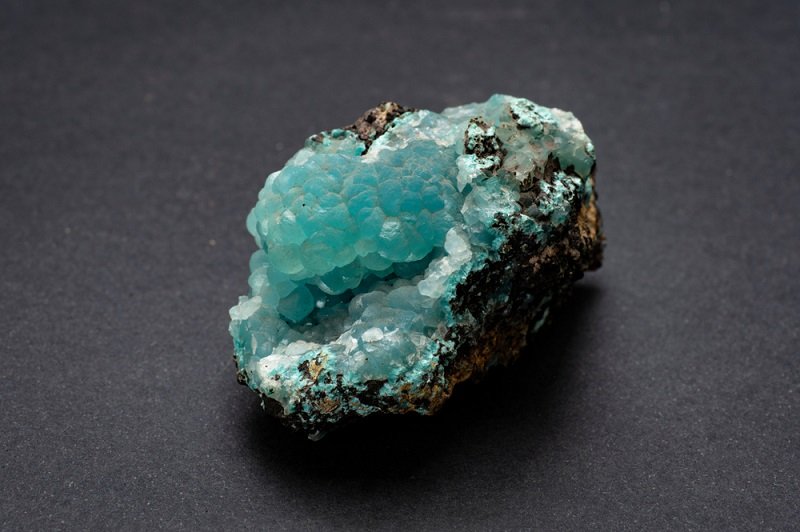
Smithsonite, first known as “calamine,” is a zinc carbonate that represented the main source of zinc until the arrival of the 1880s.
It is a mineral that can be found throughout the world, and the rarity of these crystals makes it a commodity by collectors.
Its colors can be intense but not enough to be used extensively in the jewelry industry.
Today, the Smithsonite gemstone is used as a zinc mineral, ornamental and collectible stone.
Although gemstones can come in multiple rich colors, these shades are still too soft to be considered attractive within the jewelry industry.
You can find this mineral in this location:
- Kelly Mine, Magdalena, Magdalena District, Socorro Co., New Mexico.
Zeolites
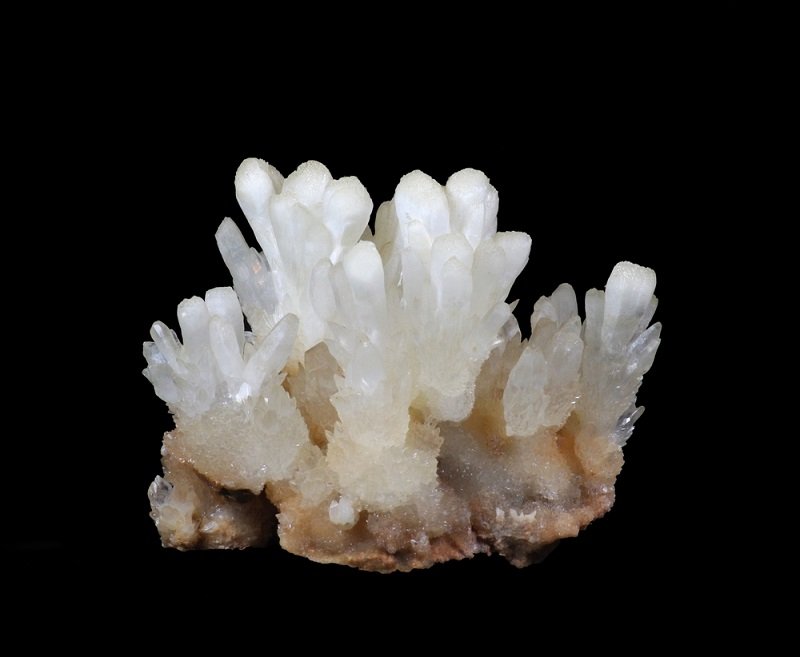
Zeolites (SiO2) are a group of hydrated aluminosilicate minerals belonging to tectosilicates; chemically, they are made up of SiO4 and AlO4.
Natural zeolites are among the most common autogenous minerals in sedimentary rocks; however, it must be said that they are formed in a wide range of rocks of different origins, ages, and geological deposition.
Zeolite has several uses in different industries: food supplements, fatten fish, to soften industrial and domestic waters, fertilizer holders and soil conditioners, etc.
You can look for this mineral here.
- St. Cloud zeolite mine (Cuchillo Negro), Cuchillo Negro District, Sierra Cuchillo (Cuchillo Negro Mts), Sierra Co., New Mexico.
- Midnight Mine, Chloride, Chloride District, Sierra Co., New Mexico.
Meteorites
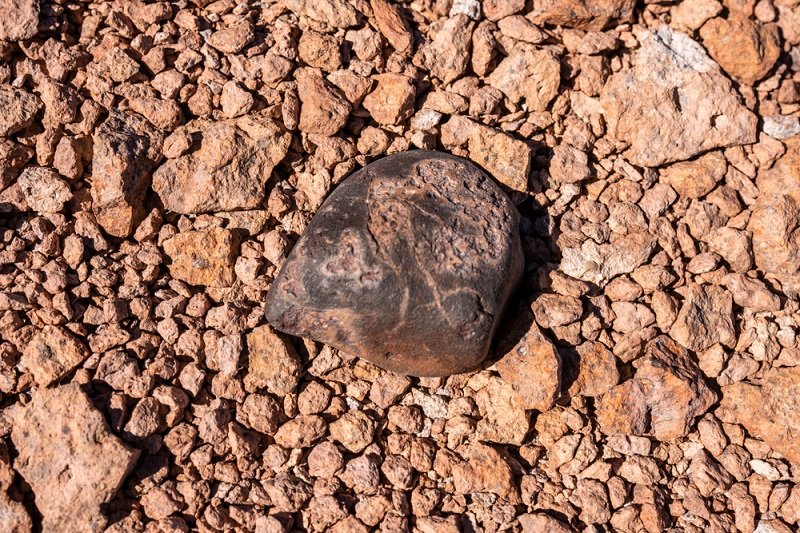
As you probably know, meteorites fall randomly all over the earth’s surface; sadly it is not as common to find it in a backyard.
And even if It’s in your backyard, it takes a sharp eye to find them because they look like simple rocks most of the time.
This is why new Mexico is the perfect place to be when it comes to finding meteorites; there are high quantities of meteorites around the state.
And they even have some specific place where you’ll have a better chance of finding meteorites.
Interestingly, only a few number of meteorites have been seen falling, but hundreds have been found.
Here is the specific location for these sites.
- Kenna meteorite, Roosevelt Co., New Mexico.
- Clovis (no. 1) meteorite, Roosevelt Co., New Mexico.

